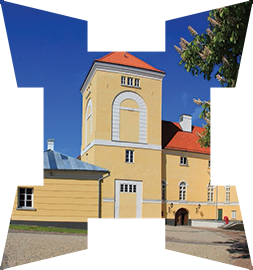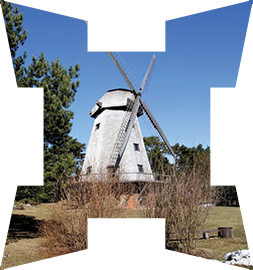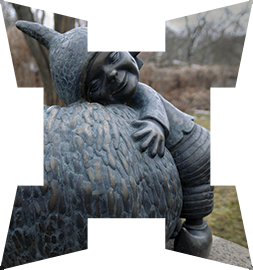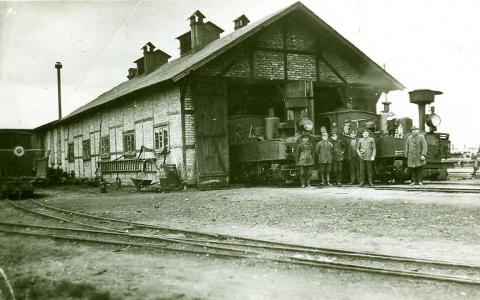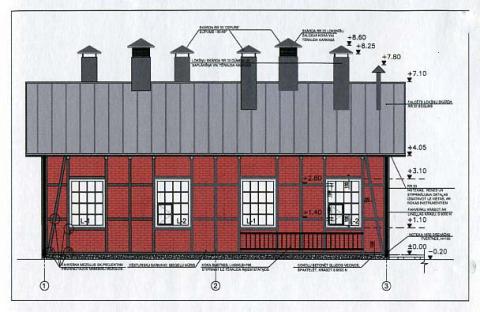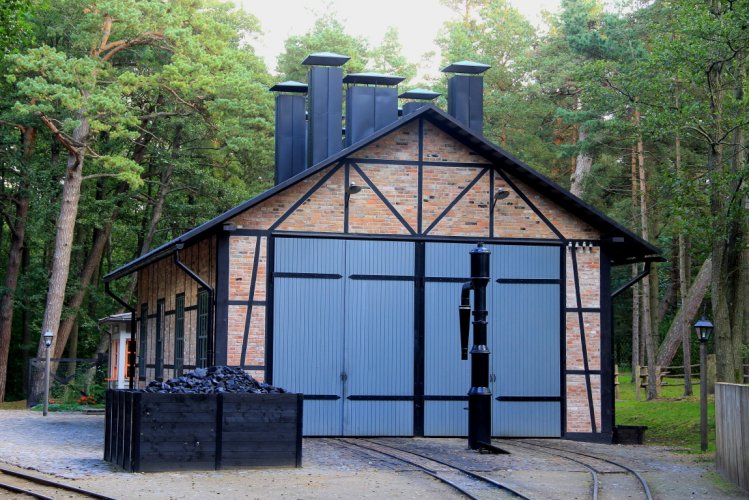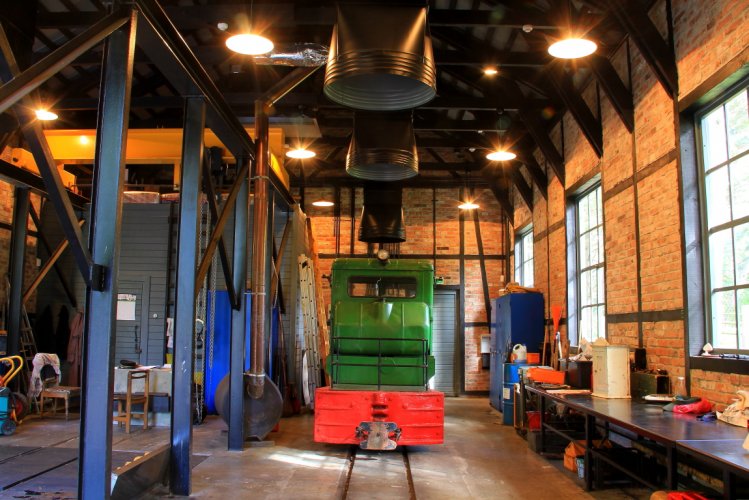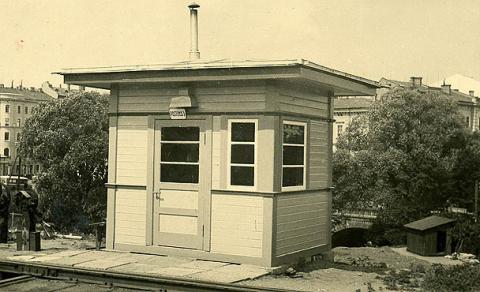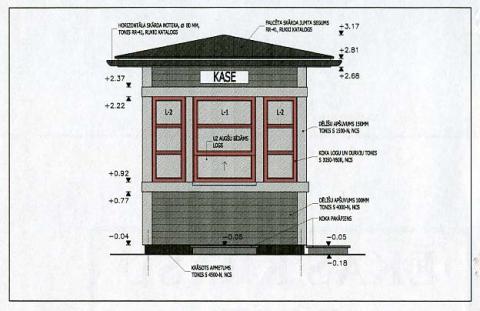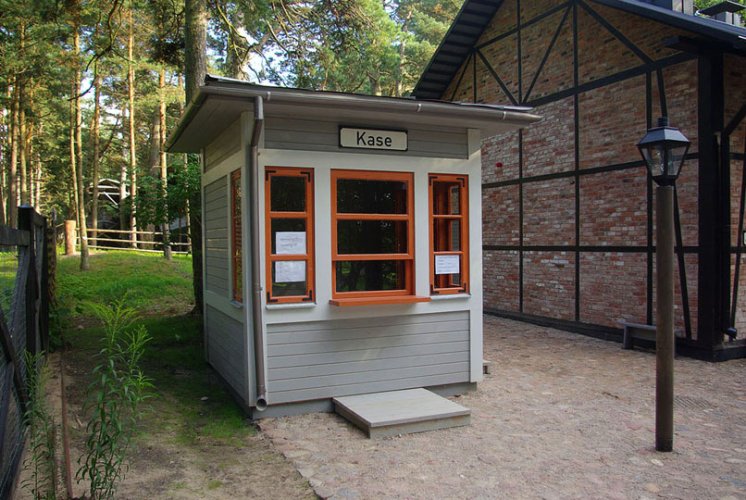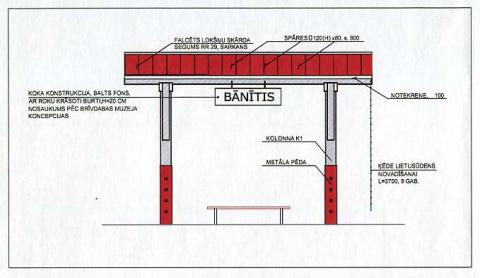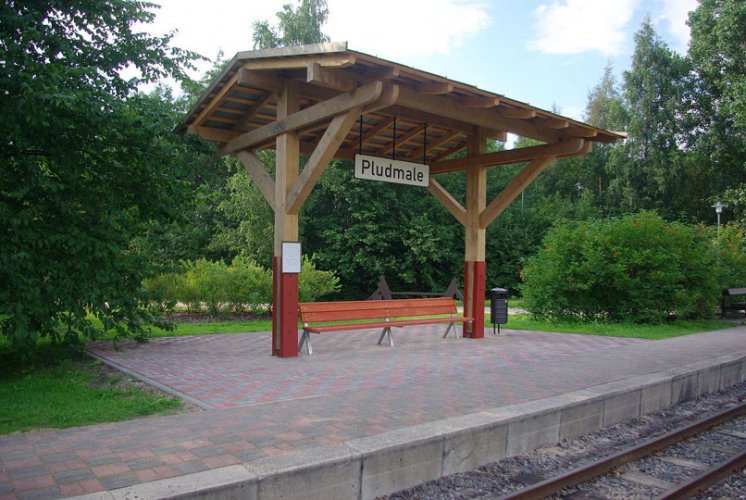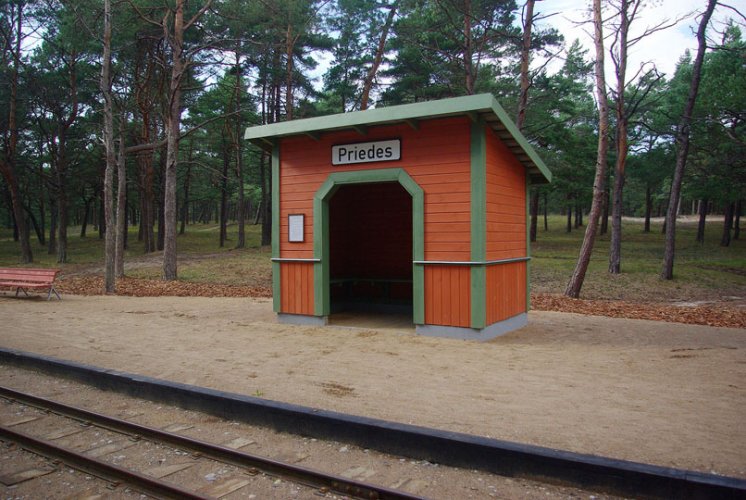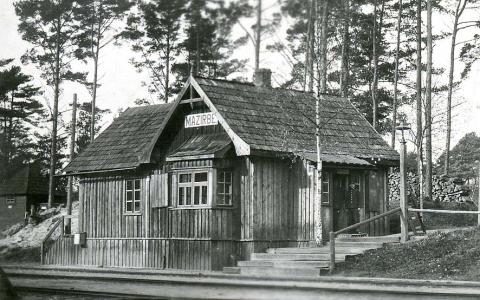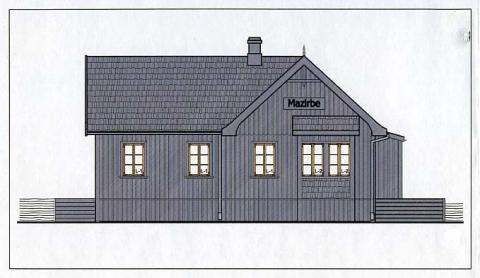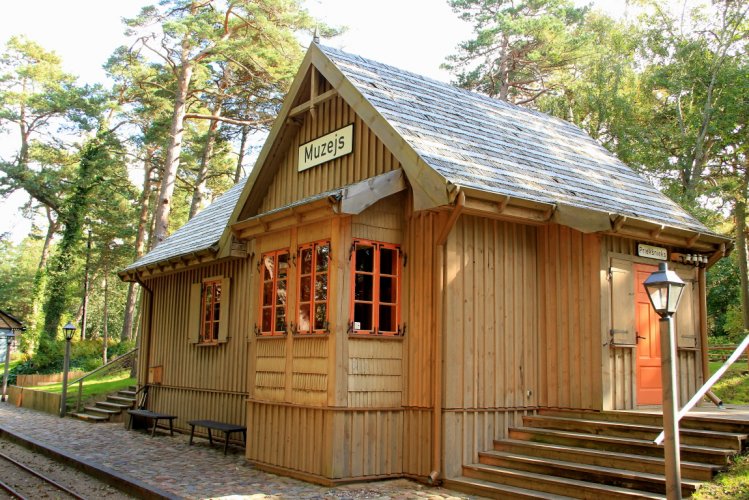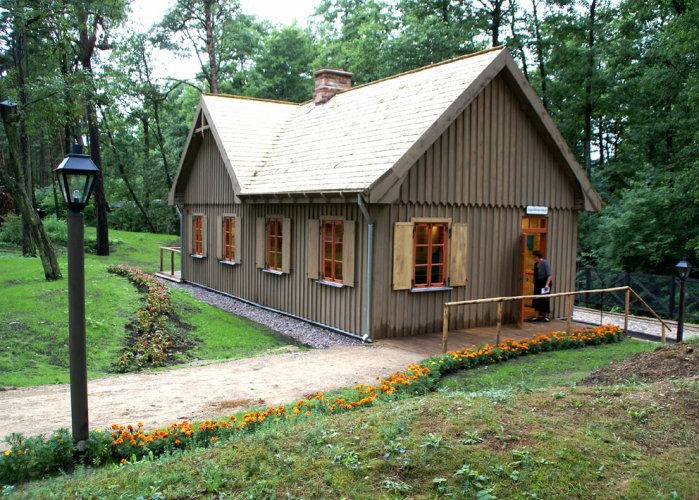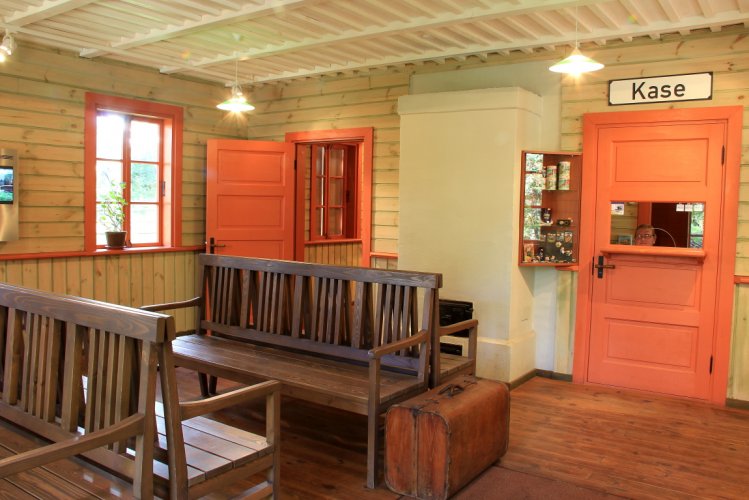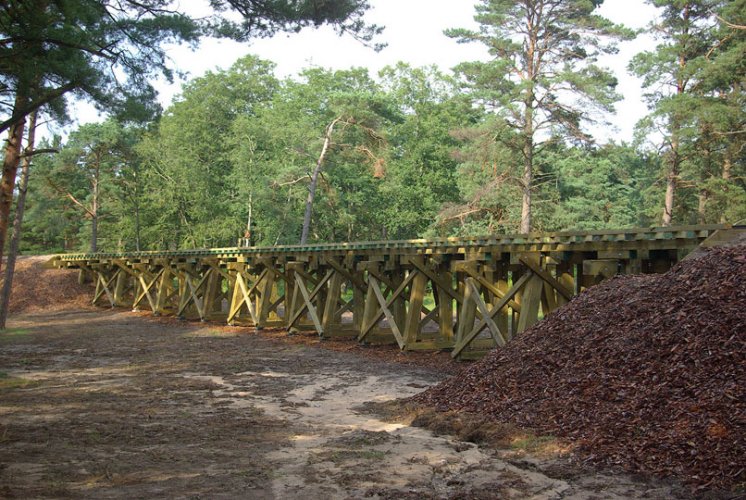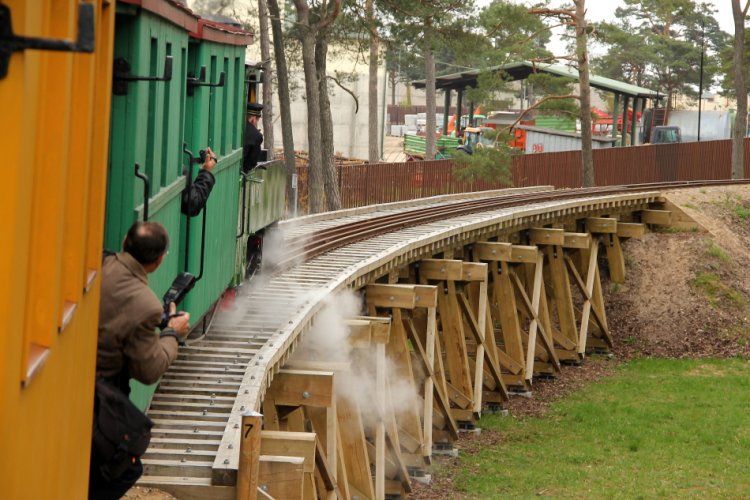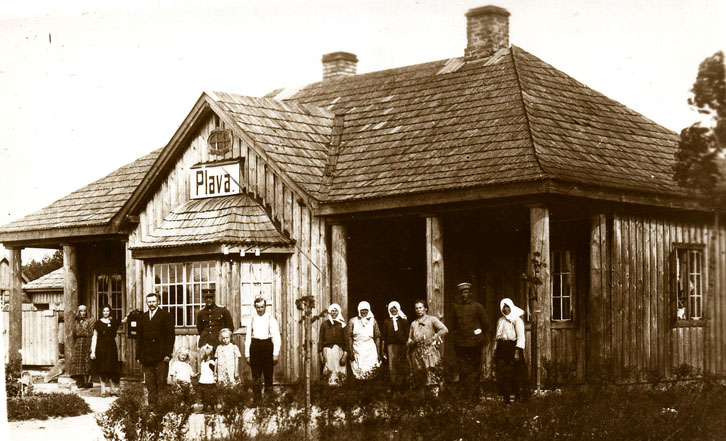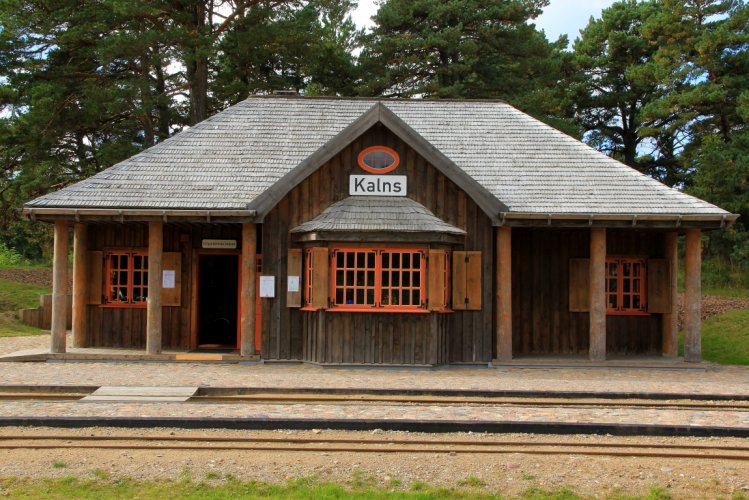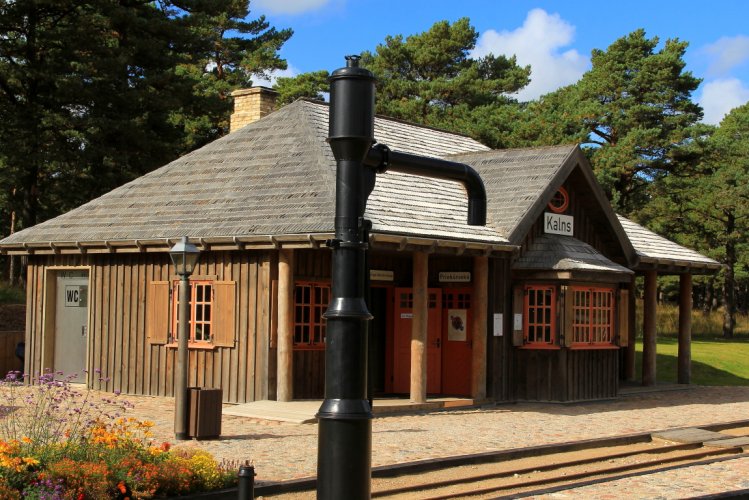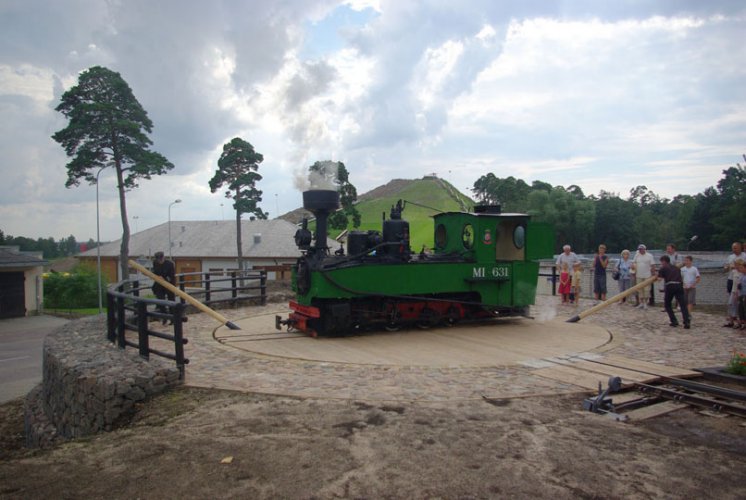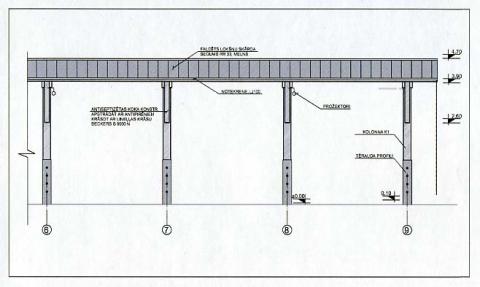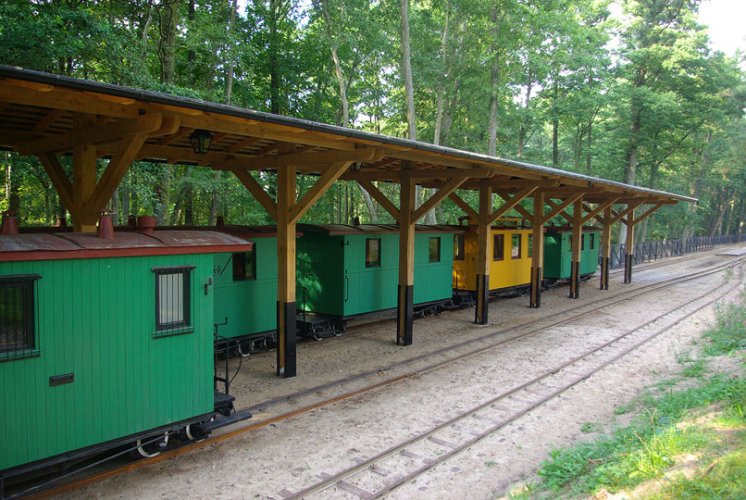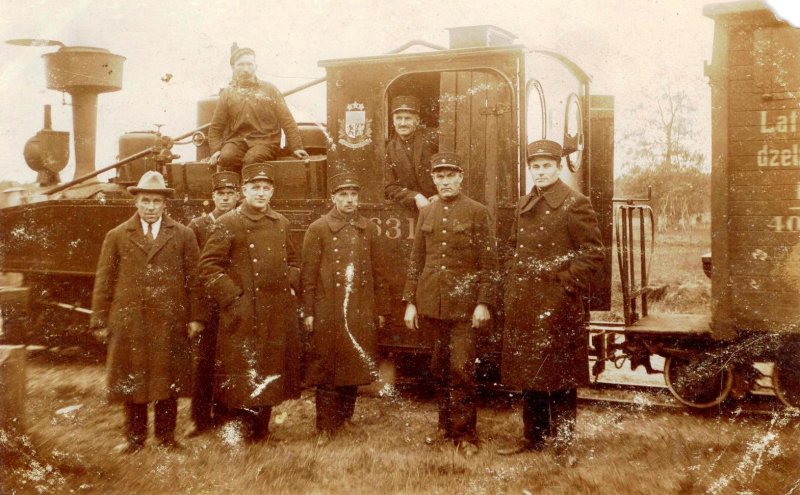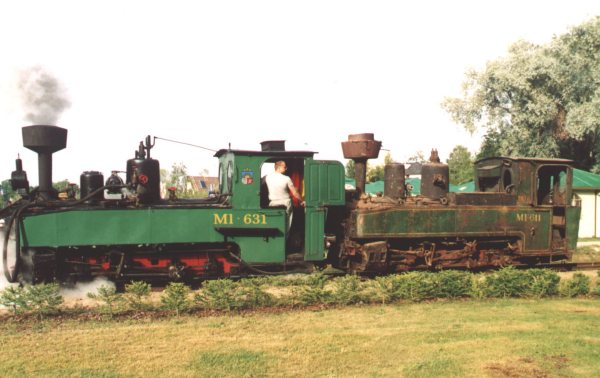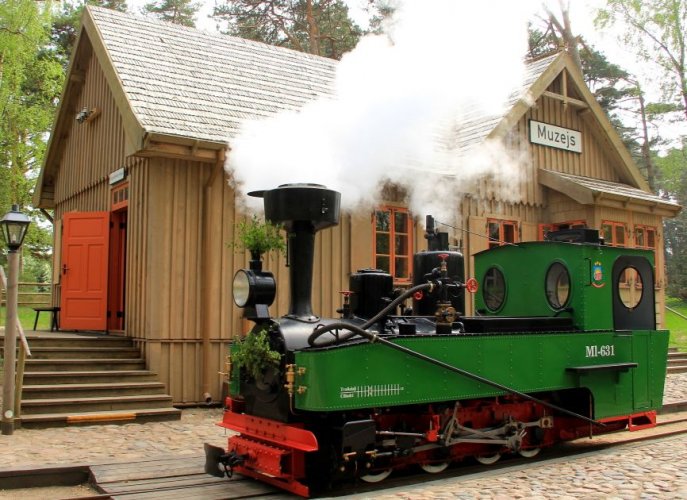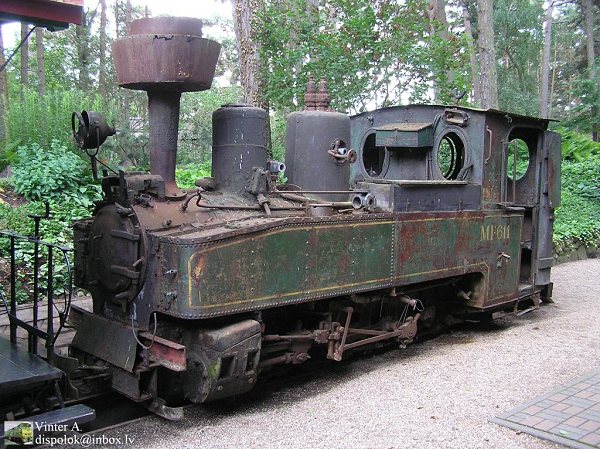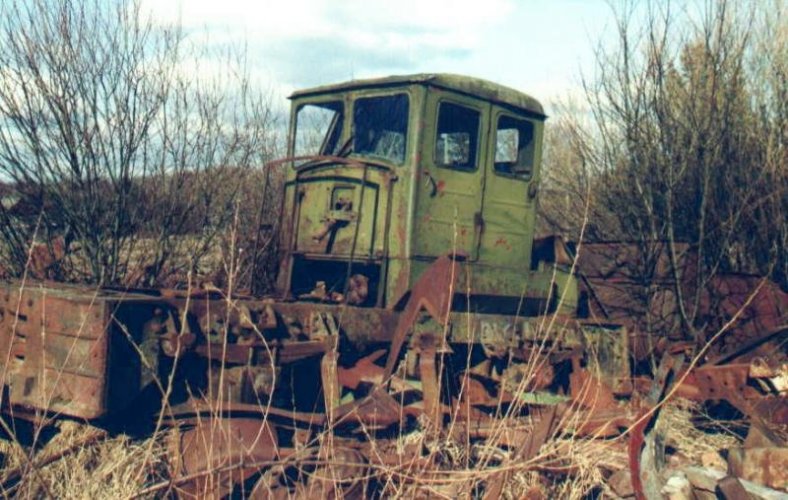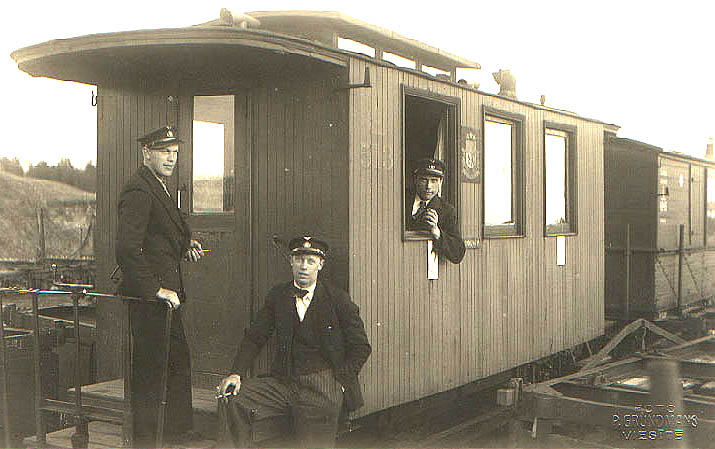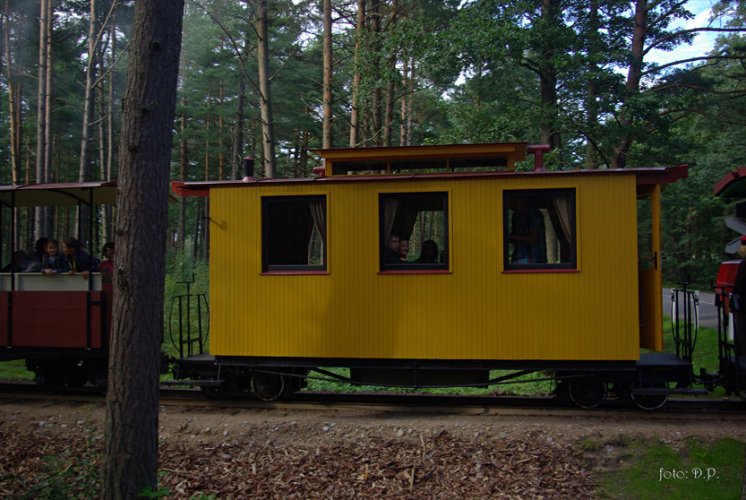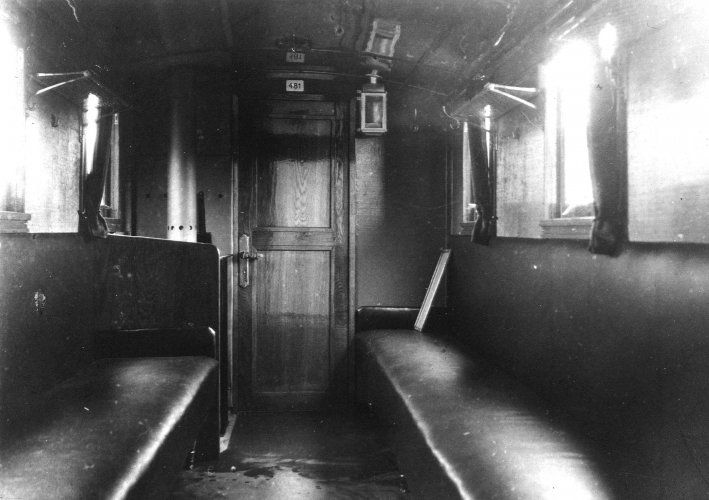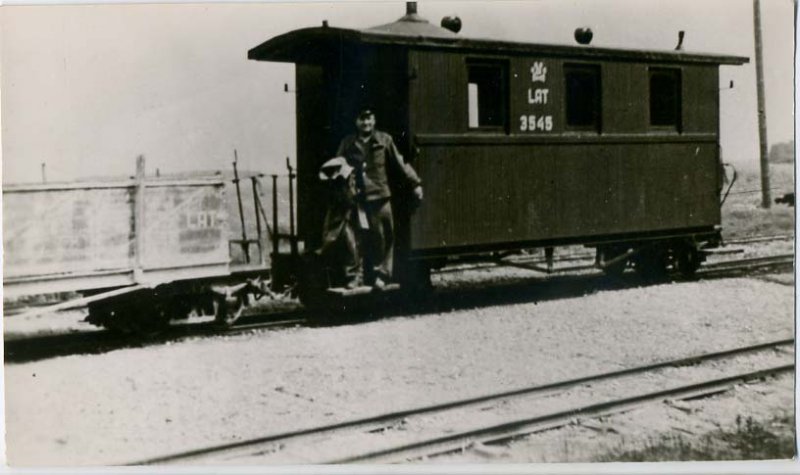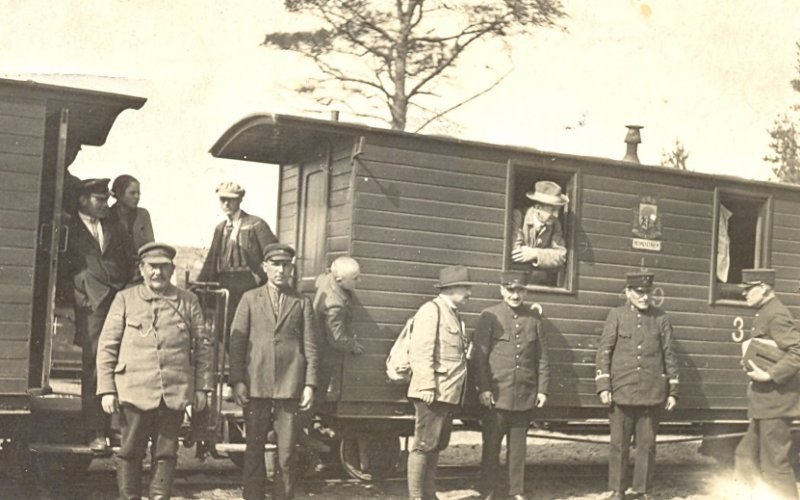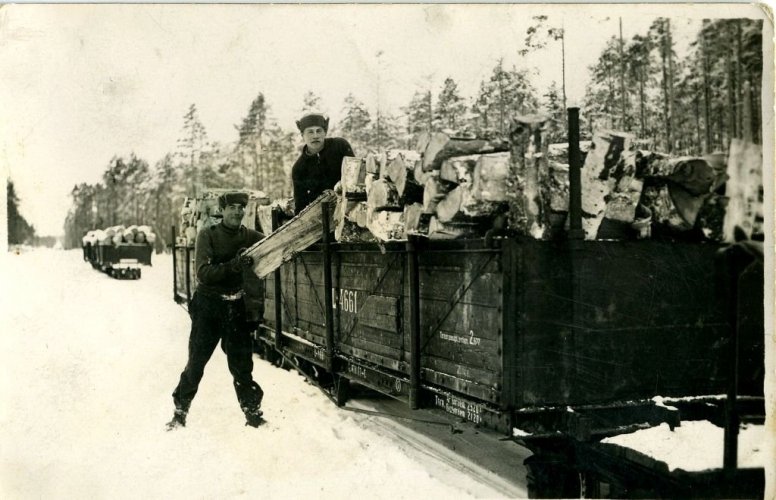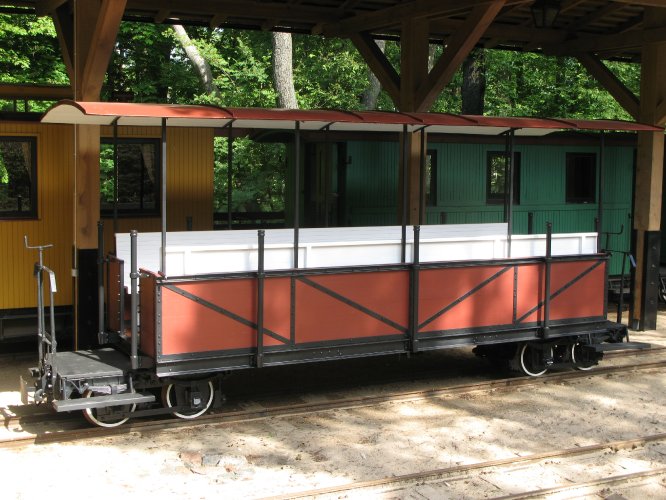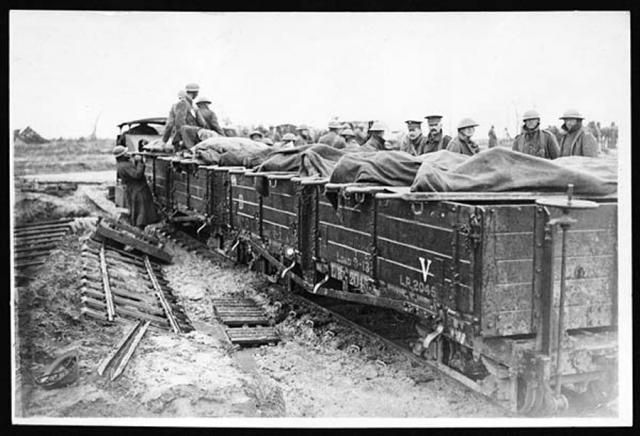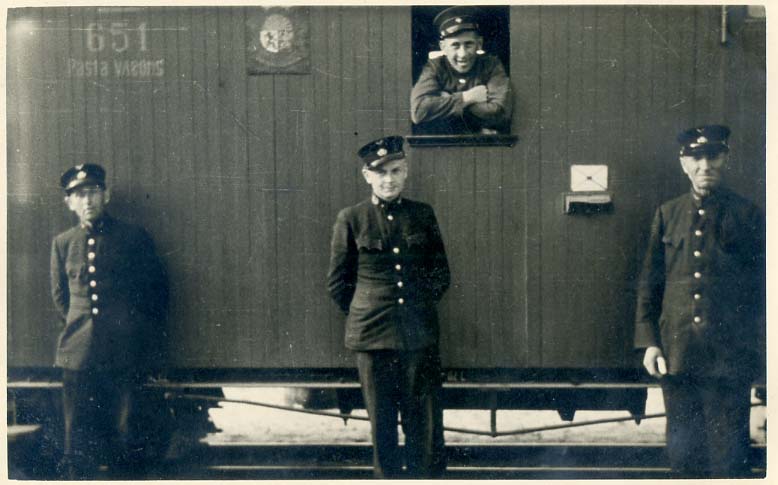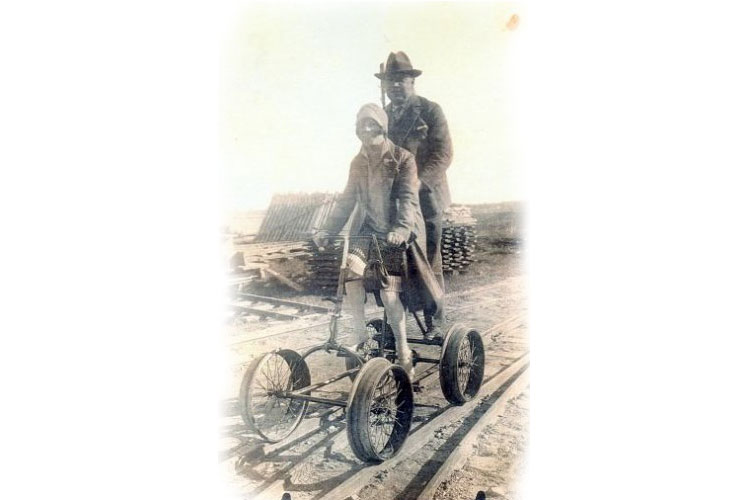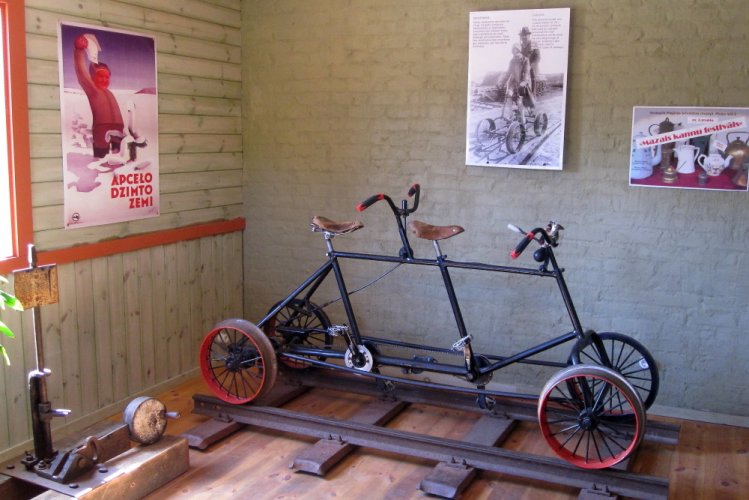Engine shed
During the WW1 several narrow gauge railroad depos were built in Kurzeme, mostly wood constructions. Often enough already exsisting outhouses were rebuilt for these purposes. Aizpute locomotive depo is built in fahverka construction and represents traditions of German architecture used even in the wartime situation.
Cash desk house
Such houses was used in Lavian State Railways in 20’s and 30’s as switchman huts or as passenger waiting rooms at small stations.
Platform shelter “Pludmale”
Platform shelter “Pludmale” has a passenger shed. The architecture matches Seaside park where it is located.
Platform shelter “Priedes”
Platform shelter “Priedes” has a passenger shed. Such sheds were built in 20’s and 30’s at small stations on Latvia’s broad and narrow gauge railroads lines.
Station house “Muzejs”
Station “Muzejs” is a copy of historical train station house in Mazirbe. Mazirbe station was built in 1916. This was one of most interesting station buildings in Ventspils-Stende field railroad line and one of the most important stations during all the narrow gauge railroad time of existance. These are the reasons museum chose to copy this particular station. The original building has not survived.
Elevated road/ wooden bridge
Such wooden bridges were typical in war field railroad constructing. There were several such bridges in Latvia. Ventspils narrow gauge railroad elevated road is 50m long and 3m high.
Station house “Kalns”
Station “Kalns” is a copy of historical “Pļavas” station. The original is built during the WW1 in 1916 using individual project.
Locomative swivel
There were times when a swivel which turned locomative around was a usual thing. Nowadays swivels in Latvia can be found only in Rīga, Jelgava, Gulbene and Ventspils.
Shelter for coaches and wagons
In 1938 Lavian State Railways owned 1034 different 600mm narrow gauge railroad wagons (timber carriers, platforms, covered ware and passenger wagons). There were no big sheds built specially for these wagons.
Nowadays only 27 of these wagons have survived, 8 of them are in Ventspils Seaside Open Air museum. Each of these 8 wagons are special for us. Museum has built a special wagon shed which at least partly protect them from bad weather. The shed ir big enough for all of our wagons. Considering the fact, that originally there were no such sheds, the architecture was chosen freely still trying to match the general atmosphere.
Rolling stock
Locomotives
There are 6 Brigadelok type locomatives in Latvia at the moment. Two of those ar in Ventspils Seaside Open Air museum: Ml-631 (property of Museum of Ventspils, under renovation in Chech Republic at the moment), Ml-611 (property of Latvian Railways, Latvian Railway museum). These are the only two steam locomatives in Latvia that are functioning.
Ml-611 was built in 1916 in the famous German locomative factory Henschel. It was sent to Eastern front. After the WW1 in 1919 it was included in Lavian State Railway inventory list under denotation Ml-611. It worked on Jēkabpils-Virsīte railroad line until February 1973. Then it was given to Latvian Etnographic Open Air museum. In 1980 it was given to kolhoz/collective farm Uzvara to use it in a factory, but it wasn’t actually used there. In 2004 it was brought to Ventspils Seaside Open Air museum. In 2008 it was listed in museum’s collection, but in June 8 2010 was gifted back to Latvian Railways.
Wagons
Ventspils narrow gauge railroad has 8 wagons at the moment – three 3rd class passenger wagons, one 2nd class passenger wagon, one WW1 British army Class D type open wagon, two WW1 German army Brigadewagen open wagon and mail-baggage wagon.
Steam locomative Ml-631
Steam locomative Ml-611
Diesel train Ll-1101
Since spring 2003 museum’s collection has a renovated diesel train. It’s built somewhere between 1957 and 1962 and is based on MD-54-2. It worked in Lielauce tilery until 1989. After 1989 it just stood in the territory of the factory as a scrap metal, until was taken by Ventspils Seaside Opean Air museum. Diesel train was renovated in 2003.
During Latvia’s first independence until 1940 there were no diesel trains on 600mm narrow gauge railroads. Our museum’s diesel train is the first one in Latvia’s history that actually transport passengers.
2nd class passenger wagon L-419 (saloon carriage)
In 1930’s for the comfort of Latvian State Railways passengers were produced a number of 2nd class passenger wagons. It was planned to build 8 such wagons until 1940; it is known that in 1938 wagon number 417 was produced. Ventspils narrow gauge railroad’s 2nd class wagon was built in 2010 and is fully based on historical 2nd class wagon construction. The superstructure is built on WW1 German army Brigadewagen type open wagon frame and trolley. To distinguish this wagon it was painted yellow.
3rd class passenger wagons L-518, L-519, L-520
In 1938 Latvian State Railways had 74 passenger wagons for 600mm narrow gauge railroads, including 59 3rd class wagons. Ventspils narrow gauge railroad has three 3rd class passenger wagons. Two of those were built in 1950’s in Estonia, Moisakila railroad factory. Third wagon with a similar construction was built 2006. All three of them were built on WW1 German army Brigadewagen type open wagon frame and trolley. 3rd class passenger wagons were painted green.
Open passenger wagon L-4951
Open passenger wagon L-4950
Museum owns an unique narrow gauge railroad platform, built in Great Britain during WW1, in 1917 for British army needs. During the war Great Britain constructed its own war field railroad and inventory. In Latvia this platform was used in Līgatne paper factory. In 1990 Līgatne factory railroad was closed and dismantled soon after. All the train inventory was given out for sale. Railroad enthusiasts bought and saved several wagons. One of the wagons was this British platform, which museum got as a gift from enthusiasts and historians of Latvian railroad.
Ventspils narrow gauge railroad’s open wagon is renovated on the basis of Great Britains’s army Class D type open wagon. Wagon still has the original WW1 trolley.
Open passenger wagon L-4952
In 1938 Latvian field 600mm railroads had 545 open wagons and platforms. Ventspils narrow gauge railroad’s discovered wagon is renovated on the basis of WW1 German army Brigadewagen open wagon. It still has the original WW1 trolley.
Mail wagon L-654
In 1930 Latvian State Railways built several wagons for 600mm railroads and specially for mail. Ventspils narrow gauge railroad has one of 8 historic mail wagons that were built sometime between 1925 and 1926 in Latvian State Railways General railroad factory. This wagon is built on the basis of WW1 German army Brigadewagen open wagon. Originally these wagons were painted cherry-red, which museum plan to do in the nearest future.
Velocipede
Since July 2005 Ventspils narrow gauge railroad has its own velocipede. It is built according to 1920’s illustration.

